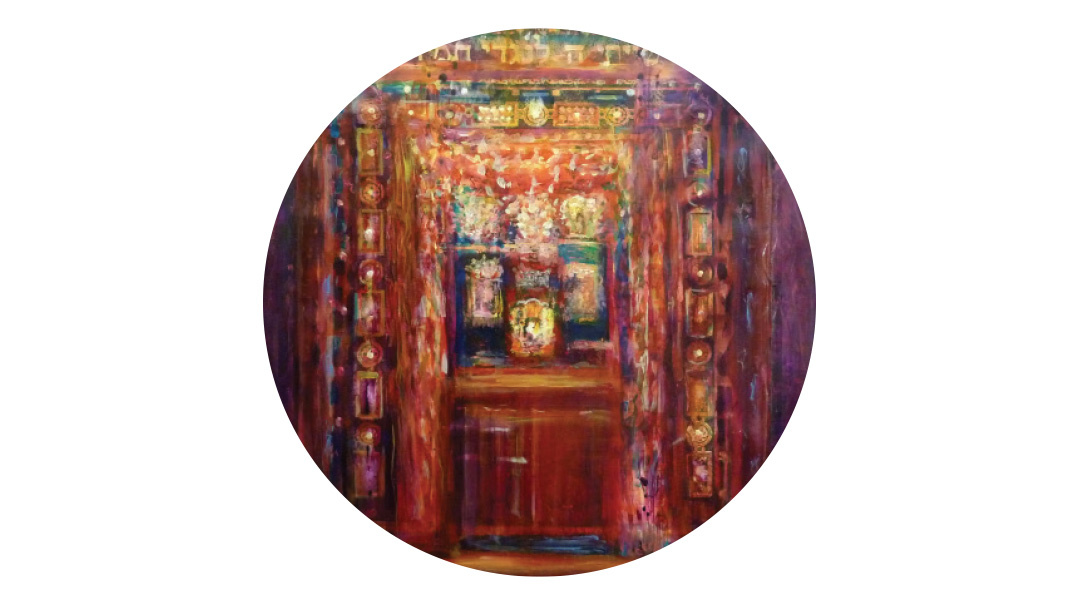Mother of Greatness: Tzelfonis


Take a leap of imagination and think how you’d react if you were visited by a malach who told you that your child would be the next gadol hador. The navi tells us just such an astounding story. In the haftorah of parshas Naso we read of Manoach and his wife childless for years until an angel informs Manoach’s wife that she will bear a son who will save the Jewish People. In preparation the angel instructs her regarding the laws of nezirus as this child will be a nazir from birth.
When his wife tells him of this remarkable visitation Manoach begs Hashem to send the angel once more. Again the angel appears to Manoach’s wife who hastens to her husband and tells him that the visitor has once again appeared. The angel repeats his instructions. Manoach and his wife offer a sacrifice and the angel disappears in the smoke. When the visitor fails to reappear the couple understands that he was indeed an angel from Hashem. Manoach’s wife has the clarity to reassure her husband that they will not die despite having seen this angelic figure. The child born to them is the great Shimshon who fought against the Philistines.
Restoring Peace
When we think about this encounter it is striking that the angel appeared not to Manoach but to his wife. The Kli Yakar based on the Midrash offers us a powerful insight. We know that the ultimate blessing is peace; indeed only when peace reigned between this couple would they be worthy of being blessed with a child. There was an element of contention between Manoch and his wife: Each blamed the other for their childlessness. The angel came specifically to Manoach’s wife so as to quell the dispute. He informed her that she was the one who was barren.
Creating peace between husband and wife is so crucial that when it comes to the law of the sotah Hashem allows His Name to be erased to create peace. Upon entering a Jewish home the first thing we see is the mezuzah on the doorpost — its slanted angle a well-known hint to the importance of compromise. A home is a dwelling place for the Shechinah and therefore must be a repository of peace. The angel doesn’t appear to Manoach and confirm that he was right. To do so could further the tension between the couple. Instead the angel appeared to Manoach’s wife. This teaches the sensitivities necessary to create peace. In fact the reason for the second visit explains the Midrash in Bamidbar Rabbah was to endear her to her husband. The second visit was a gesture from Above to cement their relationship of respect and love despite their childlessness.
Walk the Talk
If the directives were clear the first time Rav Schwab asks what was the significance of the angel’s second appearance? After all he only repeated the same instructions. If Manoach wanted to learn the laws of the nazir he could have gone to the leaders and asked them to teach him. Rav Schwab answers that Manoach didn’t want to know the actual laws: He wanted to understand how to educate his child. Specifically Manoach questioned how he could bring up a child with the Nazirite restrictions if he did not adhere to them himself. The angel’s repetition was in fact an instruction to Manoach that he should be a nazir as well. Rav Schwab learns from here a key element in successful chinuch: modeling.
A father once brought his son to the Steipler for a brachah that his son have passion in his learning. The Steipler told the father that if he gave the child this brachah then one day the child would return with his own son for the same blessing. Instead the Steipler offered this advice: “If you learn with bren then your son will see and copy you.” If a father learns with passion then his son will unconsciously imitate and then imbibe the ideal.
When we look at parshas Kedoshim this becomes clear. The parshah opens with a mandate to “be holy.” This is juxtaposed with a command to revere one’s parents. It’s when parents are striving for holiness when they’re working on themselves to turn every mundane aspect of their lives into a means of connection that children will show their parents the reverence they deserve.
Parents today deserve medals for the amount they invest into their children. We take courses in how to listen discover the right way to praise learn of the importance of spending quality time — and that’s beside for all the specialist jargon we pick up so quickly when a child has a developmental or learning issue. Along with all these tools it’s easy to lose sight of perhaps the most important tool of all (along with prayer): being a living role model. What’s really challenging about this is that we’re raising not grandchildren not nieces and nephews and not even our neighbors all of whom disappear at the end of a pleasant afternoon. We’re raising little people who live with us 24/7 and see us at our most vulnerable — when we’re tired hungry or stressed. Paradoxically it’s at the smallest seemingly insignificant moments that children can learn greatness.
Children are masters at sensing their parents’ true priorities and when our expectations for them reflect an honest assessment of who we really are and not who we pretend to be. A great litmus test is to ask a child: If Mommy could have any three things in this world what would she really want? The answer to this question is a great indicator of the values we have given over to the next generation.
The extent of this message of visual chinuch is found in yet another area connected with the mother of Shimshon. The Midrash Shochar Tov ascribes each pasuk in Eishes Chayil to a different woman from Tanach who embodied the characteristics of that verse. The pasuk “Sadin asesah vatimkar vachagor nasnah lakenaani — She makes and sells garments and she delivers a belt to the peddler ” is a description of Shimshon’s mother.
Rav Ahron Soloveitchik offered an insightful connection between this righteous woman and her capacity to make and sell clothing. We know that Shimshon was unique among the shoftim in having lived among the Pelishtim married a Pelishti woman (after conversion) and waging war against them. All this points to a certain level of familiarity and understanding of this foreign nation. How did Shimshon know of their mores and values? Rav Soloveitchik suggests that Shimshon learned this from his mother:Hhe would accompany her to the market place when she traded with the foreigners. Shimshon learned from being with his mother about the other nations and therefore was able to live among them later as a great Jewish leader.
This idea has a fascinating application. Our children do not absorb only the type of behavior we show to our friends family and neighbors. Our children learn from every single one of our interactions. The way we talk to the cashier the air-conditioning technician the cleaning lady the meshulach who knocks on the door — all these interactions give unspoken messages to those around us. These are often overlooked chinuch moments ones which can shape our children deeply.
True Giving
One of the interesting details in the story is the moment of Manoach’s realization that he’s seen an angel. It’s only when the “visitor” does not reappear that Manoach is certain that he’s an angel. The Aish Tamid suggests that we learn from here a secret in the way we perform chesed. The fact that the angel disappears in smoke is not in essence an indication that he’s an angel for at that time many people at that time knew how to do miraculous things. However it’s human nature to come back to receive thanks and see that the blessing given was fulfilled. When the angel does not return that’s the real indication that he was an angel.
Likewise notes the Aish Tamid when we do a chesed for someone we can strive for the level of gomel chesed. Gomel related to the word ligmol “to wean ” indicates a level of separation even while we are giving. While we lend a hand we can separate ourselves from needing accolades —or even thanks. A skilled giver makes the recipient feel like she somehow deserved the kindness like the giver was merely paying something back. The angel’s failure to reappear shows how to give to others without drawing attention to ourselves.
Chazal teach us that the name of Shimshon’s mother — Manoach’s wife — was Tzelfonis. The name includes the word tzel a shadow for she twice merited encountering an angel. The Marshal notes that using this name is a segulah against having a bad spirit. Tzelfonis is counted as one of the 23 righteous women in Tanach and no wonder: Her story is replete with profound lessons that resonate until today.
Oops! We could not locate your form.







